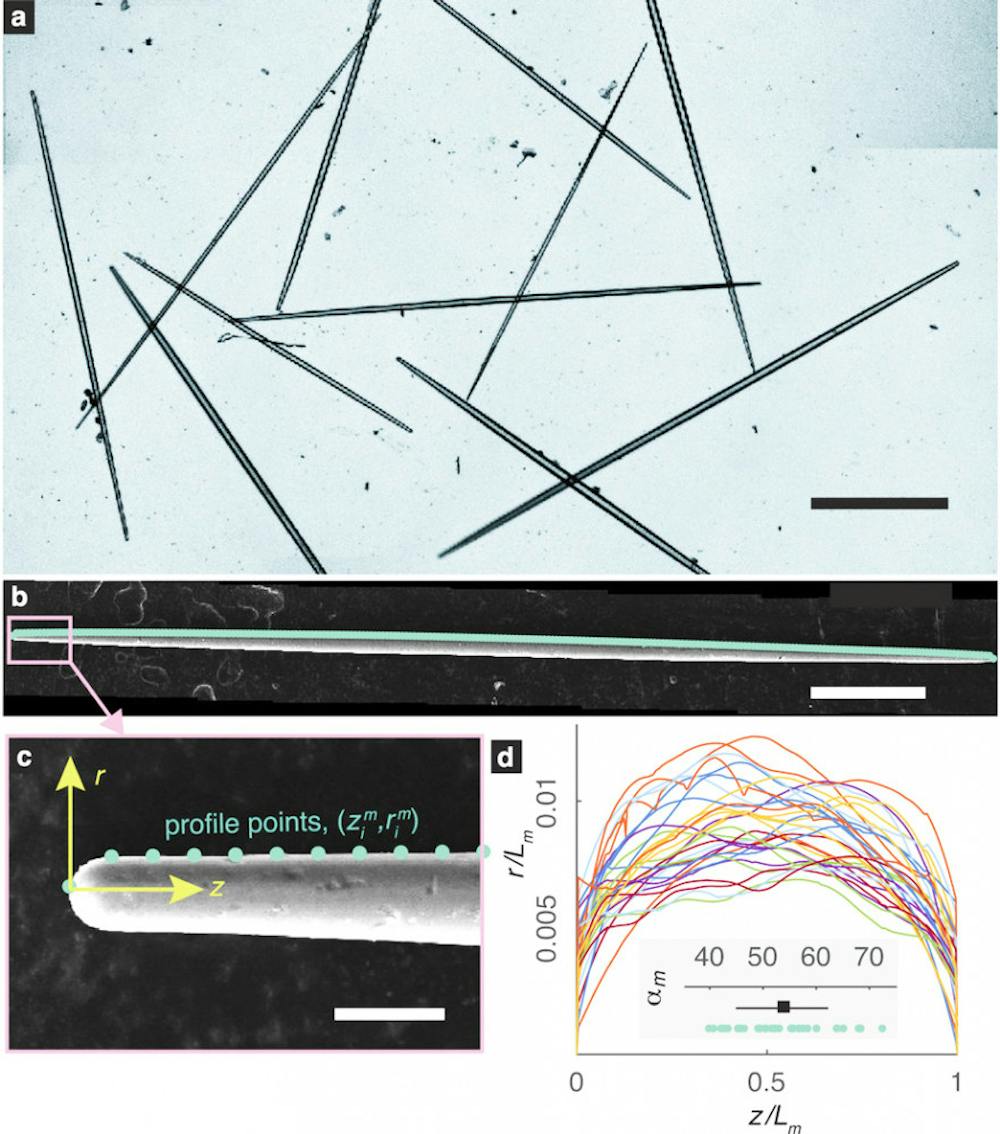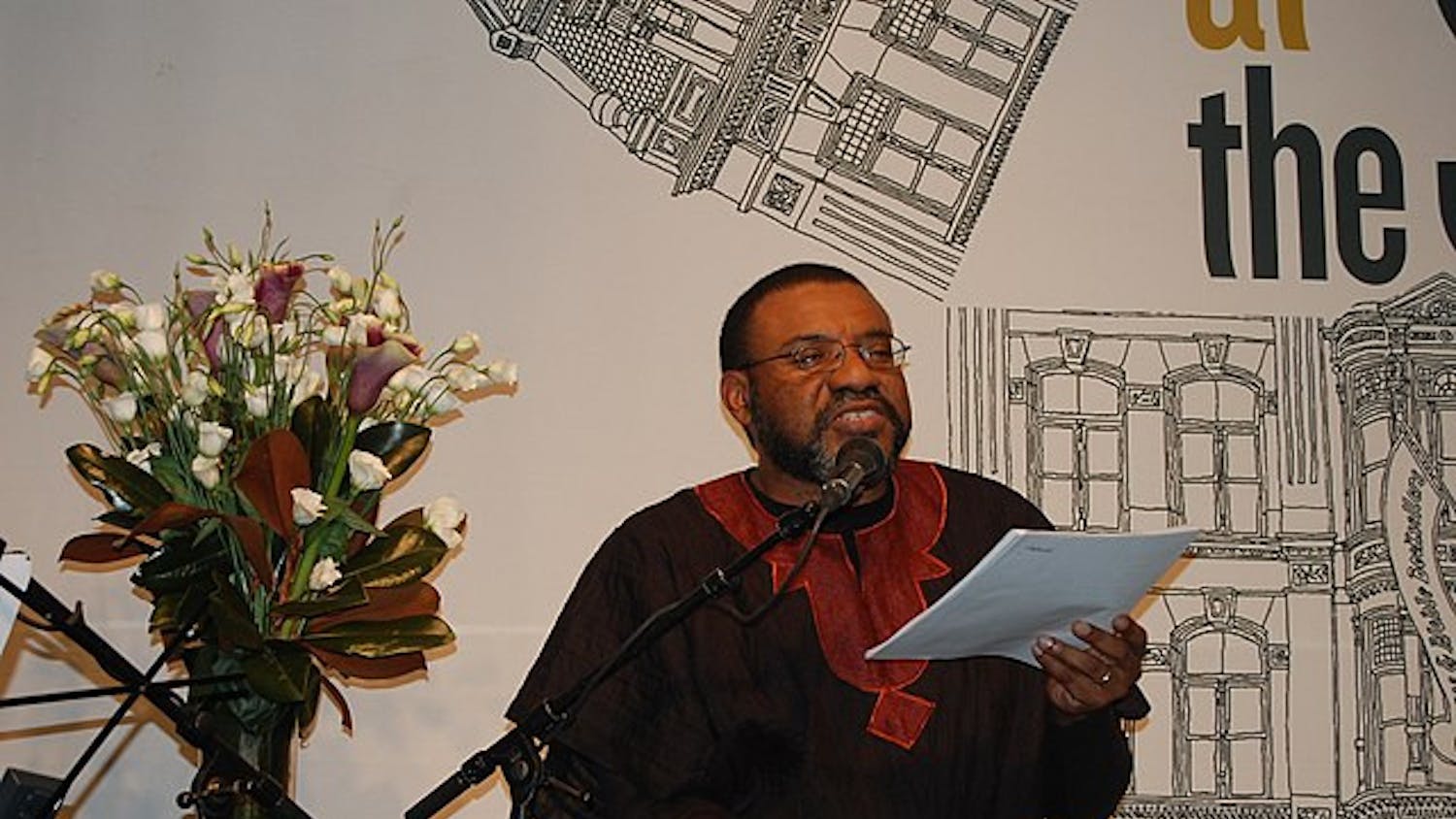New research in a study conducted by Michael Monn GS and Assistant Professor of Engineering Haneesh Kesari revealed that the structure of the marine sponge Tethya aurantia demonstrates an impressive strength and inspires new connections between nature and engineering. Rods called strongloxea spicules make up the skeleton of the sea sponge and closely approach the optimal shape to resist buckling under pressure.
The rods are thicker in the center and tapered on either end. Their shape was remarkably uniform between spicules of different sponges, which led the researchers to question whether it served a mechanical function, Monn said.
“The immediate finding … that the spicules are tapered seems to increase the effectiveness of supporting a load by 33 percent,” Kesari said. The exact shape closely resembles the shape of the Clausen column, theorized in 1851 by German scientist Thomas Clausen to optimize resistance to buckling.
Kesari said that the motivation behind biologically-inspired engineering research is in using nature as a source of possibility: “Engineers are really good, given an initial design, at making it very precise. But there’s no systematic way to arrive at the initial guess. That’s why we look at nature.”
While homo sapiens have only evolved in the past 200,000 years, sponges have existed for over 700 million years. A large segment of the planet’s organisms have become extinct during this time, Kesari said. Organisms with the longevity of these marine sponges have faced extreme evolutionary pressure and experienced many opportunities to adapt. “If they’ve survived to this day, there’s a higher probability that the kind of adaptations they have are really good,” he added.
The simplicity of the organism also makes it a better candidate for research, Kesari added. The sponge both supplies an evolutionary benefit and lies at the “sweet spot” of animal complexity, making it easy to understand, he said.
“Sea sponges basically act as water filters — water pumps for nutrients,” Kesari said. The simplicity of the mechanical function makes it more straightforward to identify a structure-property connection, Monn added.
The implications for this outcome are twofold, the researchers said. The most immediate and concrete impact is the potential for optimizing structures and thereby reducing costs. “For example, in aerospace applications, a lot of the cost comes from the fuel needed for transporting mass,” Kesari said. Finding that the spicules can support 33 percent more load than a regular column means engineers can reduce the mass of a column with the same function by 33 percent by using this design.
The larger implication for this study, Kesari identified, is a fundamental shift in the dynamic between scientific study and nature. “Long ago, in Darwin’s time, people were interested in nature, but assigned a theological meaning to it.” But the existence of biological structures that are far from optimal created skepticism, Kesari said. “This work somehow brings it to a balance; a lot of things in nature are not the best, they only have to be good enough,” he added. “This is a proof that nature can actually hit optima — not that it will, but that it can.”
This marks what Kesari calls a “paradigm shift” that allows us to be more open-minded about looking toward nature for inspiration. Monn added that their research “might lend weight to the possibility that nature is capable of powerful adaptations.”
James Weaver, senior research scientist at Harvard’s Wyss Institute for Biologically Inspired Engineering, said that other studies investigating structure-function relationships in skeletal materials traditionally focus more on the material composition than on external geometry.





